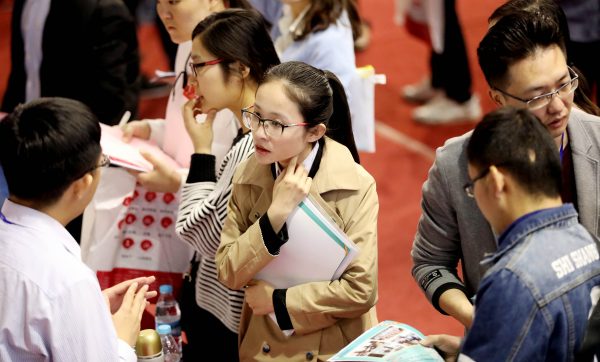The headlines on China’s economic slowdown do not always illustrate the human impact which has been disproportionally borne by the country’s youth. Amid the COVID-19 pandemic, China’s youth unemployment rate — those in urban areas looking for employment between ages 16–25 — climbed to 19.9 per cent in July before falling to 18.7 per cent in August 2022. This was against the overall unemployment rate of around 5 per cent. The youth unemployment rate has been hovering at over 10 per cent for the last few years but this recent spike paints a bleak picture.
Grim statistics do not quite capture the visible feelings of anxiety. The impact of China’s zero-COVID policy for the last three years is not only reflected in national GDP, but also in the layoffs, hiring freezes and disappearing job opportunities for those entering the job market. This zero-COVID policy exacerbates a long-term increase in youth unemployment that reflects structural shifts in China’s economy.
Few would have predicted that China would be failing to create enough new jobs for its youth. Having been the workshop of the world and an economic powerhouse for decades, China has generated a massive number of new jobs across sectors from manufacturing and services to high-paying white-collar jobs. The fact that a fifth of young Chinese are now unable to land a job is a significant reversal of a decades-old trend in strong job creation that brought rising social mobility and prosperity.
The last time China had serious unemployment issues was the 1990s, during a particularly painful period of economic reforms. As China’s state enterprises were restructured and privatised, tens of millions of mostly older workers were laid off. This caused social dislocation and massive protests — something any government wishes to avoid. Since then, especially for young workers, the labour market has more often faced shortages than a lack of employment opportunities.
But in recent years, as labour-intensive manufacturing is relocated out of China, and with the government promoting industrial upgrading and automation, the service sector has not sufficiently absorbed workers who have left their manufacturing jobs. Regulatory crackdowns on tech companies have also dampened hiring for university graduates.
The government has recognised this urgency and announced measures at national and local levels to support youth employment. Credit subsidies for unemployed workers, skills training for manufacturing workers and incentives for young people to create their own start-ups can all be somewhat helpful. But how much these measures alone can reverse structural youth unemployment remains unclear.
Youth unemployment can be better understood in relation to a host of job-related issues that constitute a crisis of work. On top of the quantity of jobs, a challenge is also the failed promise of jobs. An expanded conceptualisation of youth employment allows one to see the multifaceted problems facing Chinese youth.
One dimension of this crisis of work is that jobs are often insecure. Some flexibility may be useful, but too much of it produces anxiety. This is the case with jobs created in the service sector and by the burgeoning platform economy as well as increasingly previously highly secure white-collar jobs. More and more workers, especially those with university degrees, opt to compete for civil service jobs. These used to be frowned upon by young people but are now seen as more secure and more attractive.
A second dimension of this crisis is disillusionment. Young people have spoken out about feeling burnout from their work. The issue is not only long working hours, encapsulated in the infamous ‘996’ regime (work from 9am–9pm, six days a week) popularised by tech workers, but one of feeling unable to move socially upwards. Young workers refer to this as ‘involution’ to illustrate the sense of working harder with fewer rewards. More recently, they speak of ‘lying flat’, ‘letting it rot’ and ‘run’ to show how much they are fed up and willing to give up trying.
While China has not seen the same ‘Great Resignation’ phenomenon during the pandemic as Western countries, China’s youth have become less satisfied with just picking any job. They look for work that provides some degree of security, work-life balance, a path for upward social mobility and for many, meaning. Rising youth unemployment may exacerbate this discontent, limiting options and pushing China’s youth into less desirable work.
Recognising various dimensions of youth discontent over work helps reframe the issue not only in terms of policy solutions, but also in terms of sensitivity towards how China’s youth can feel more hopeful. Addressing these issues may start by empowering workers to have a voice in their workplace, increasing job security at a time of intense economic anxiety and tackling economic inequality.
High levels of youth unemployment and underemployment, combined with disaffection with their jobs, is a recipe for despair and disaffection. Without addressing these concerns in the coming years, China will see a generation of lost youth who may look for disruptive ways to voice their despair.
Kevin Lin is Managing Editor of Asian Labour Review. His research is focused on the development of labour movement, migrant worker organising, labour NGOs and civil society in China.

